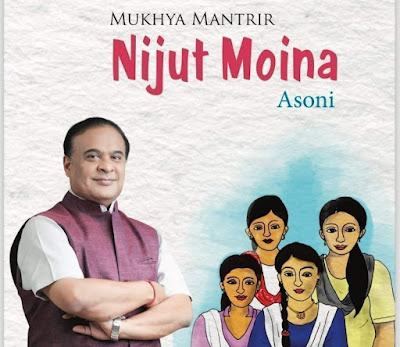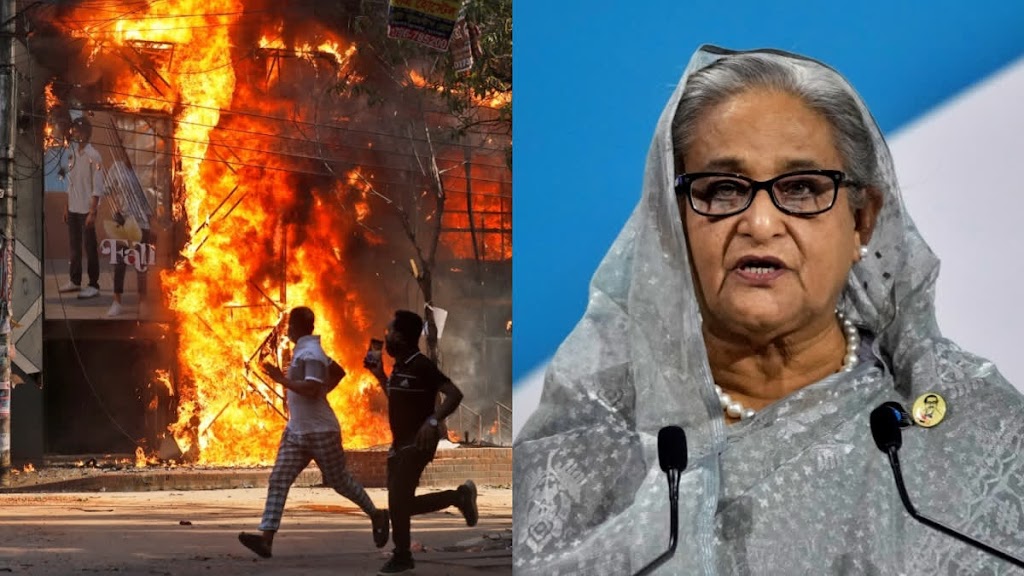A Brief Note on Reasons for Failure of Revolt of 1857 for APSC : Discuss the Result of the Revolt of 1857
Hello, aspirants are you preparing for UPSC or APSC mains exan ? If yes, then you must be aware of the most important topics for Indian History saction for the upcoming mains exam preparation. Therefore every aspirants need to know the each & every topics of History of India for the exam. In this regard “World_Polity” decides to provide you the one most important Indian History topic with answer for the upcoming mains exams. Infact this Indian History topic Revolt of 1857 and the Causes of 1857 Revolt for APSC will be a key topic for the upcoming mains exam. So the Revolt of 1857, its causes, Reasons for Failure & the Result of the Revolt of 1857 will be a pedestrian to crack your exam.
Indian Rebellion of 1857
First War of Independence for APSC
In this article we have provided you one of the most important topic of Indian History the Indian Rebellion of 1857 or the Revolt of 1857, also known as the “First War of Independence for APSC Mains exam. So, read this most important Indian history topic for APSC Mains exam. These history topics for mains exam are extremely important and should be a part of your preparation.
Revolt of 1857 for APSC : Causes of 1857 Revolt for APSC
The Revolt of 1857, also known as the “First War of Independence,” was the first significant attempt by Indians to end British imperialism. It started on 10 May 1857, first in the form of sepoy mutiny and later as a concerted effort by Indian rulers under the de jure supervision of the last Mughal Emperor, Bahadur Shah Zafar. As the Revolt of 1857 posed a considerable threat to British power, it was proved as a watershed movement for the British perspective towards India. They became more cautious in their approach towards administration, the nature of the army, differential treatment of the vast Indian communities, etc.
The Indian Rebellion of 1857 or the Revolt of 1857 was mainly concentrated across the vast portions of northern India, engulfing the peasantry and other civilian populations that stood side-by-side with their leaders. Many prominent leaders of the Revolt and common mass fought bravely with the British forces.
Course Of Revolt Of 1857 in Chronological Order
The simmering discontent among the Indian sepoys against the British East India Company was further fuelled by the order to use those greased cartridges. Sepoys refused to use the greased cartridges. This was considered insubordination by the British officials, who began to impose harsh punishments for sepoys. Thus began the revolt of 1857.
Let us discuss the course of the revolt of 1857 briefly.
|
Date |
Events |
|
2 February 1857 |
The 19th Native Infantry at Berhampur, who refused to use the Enfield rifle, broke out in mutiny. Soon, they were disbanded. |
|
8 April 1857 |
Mangal Pandey, a sepoy of the 34th Native Infantry, was executed for firing at the sergeant major, and the 34th Native Infantry was disbanded. |
|
10 May 1857 |
The revolt broke out at Meerut. |
|
11 to 30 May 1857 |
Bahadur Shah Zafar was proclaimed the Emperor of India. Gradually, the revolt broke out in Delhi, Bombay, Aligarh, Ferozepur, Bulandshahr, Etawah, Moradabad, Bareilly, Shahjahanpur, and other stations in Uttar Pradesh. |
|
June 1857 |
Outbreaks at Gwalior, Jhansi, Allahabad, Faizabad, Lucknow, Bharatpur etc. |
|
July & August 1857 |
Mutinies at places like Indore, Mhow, Nerbudda districts, and a few places in Punjab. |
|
September 1857 |
|
|
November 1857 |
General Windham was defeated by the rebels outside Kanpur. |
|
December 1857 |
The Battle of Kanpur was won by Sir Colin Campbell. |
|
March 1857 |
Lucknow was recaptured by the British. |
|
April 1857 |
Jhansi was captured by the British by fighting against Rani Laxmibai. |
|
May 1857 |
Bareilly, Kalpi, and Jagdishpur were recaptured by the British. |
|
July to December 1857 |
Gradually, the British authority was re-established in India. |
Causes of 1857 Revolt for APSC ::
The issue of greased cartridges and military grievances has been over-emphasized, as the factor for the Revolt of 1857. However, recent researches have proved that the cartridge was not the only cause for this revolt. In fact, multiple causes i.e., social-religious-political- economic worked together to produce the rebellion.
1. Social and Religious Causes: The British had abandoned its policy of non-interference in the socio-religious life of the Indians. Abolition of Sati (1829), Hindu Widow Remarriage Act (1856). Christian missionaries were allowed to enter India and carry on with their mission of proselytizing. The Religious Disabilities Act of 1850 modified the traditional Hindu law. According to it, the change in religion would not debar a son from inheriting the property of his heathen father.
2. Economic Causes: British rule led to the breakdown of the village self-sufficiency, commercialization of agriculture which burdened the peasantry, adoption of free trade imperialism from 1800, de-industrialization, and drain of wealth all of which led to the overall decline of the economy.
3. Military Grievances:
The extension of British dominion in India had adversely affected the service condition of the Sepoys. They were required to serve in an area away from their homes without the payment of extra Bhatta. An important cause of Military discontent was the General Service Enlistment Act, 1856, which made it compulsory for the sepoys to cross the seas, whenever required. The Post Office Act of 1854 withdrew the free postage facility for them.
4. Political Causes: The last major extension of the British Indian territory took place during the time of Dalhousie. Dalhousie announced in 1849, that the successor of Bahadur Shah II would have to leave the Red Fort. The annexation of Baghat and Udaipur was, however, canceled and they were restored to their ruling houses. When Dalhousie wanted to apply the Doctrine of Lapse to Karauli (Rajputana), he was overruled by the court of Directors.
Leaders Associated with the Revolt of 1857
|
Barrackpore
|
Mangal Pandey
|
|
Delhi
|
Bahadur Shah II, General Bakht Khan
|
|
Delhi
|
Hakim Ahsanullah (Chief advisor to Bahadur Shah II)
|
|
Lucknow
|
Begum Hazrat Mahal, Birjis Qadir, Ahmadullah (advisor of the ex-Nawab of Awadh)
|
|
Kanpur
|
Nana Sahib, Rao Sahib (nephew of Nana), Tantia Tope, Azimullah Khan (advisor of Nana Sahib)
|
|
Jhansi
|
Rani Laxmibai
|
|
Bihar (Jagdishpur)
|
Kunwar Singh, Amar Singh
|
|
Allahabad and Banaras
|
Maulvi Liyakat Ali
|
|
Faizabad
|
Maulvi Ahmadullah (He declared the Revolt as Jihad against English)
|
|
Farrukhabad
|
Tufzal Hasan Khan |
|
Bijnaur
|
Mohammad Khan
|
|
Muradabad
|
Abdul Ali Khan
|
|
Bareilly
|
Khan Bahadur Khan
|
|
Mandsor
|
Firoz Shah
|
|
Gwalior/Kanpur
|
Tantia Tope
|
|
Assam
|
Kandapareshwar Singh, Manirama Datta
|
|
Orissa
|
Surendra Shahi, Ujjwal Shahi
|
|
Kullu
|
Raja Pratap Singh
|
|
Rajasthan
|
Jaidayal Singh and Hardayal Singh
|
|
Gorakhpur
|
Gajadhar Singh
|
|
Mathura
|
Sevi Singh, Kadam Singh
|
British Officials Associated with Revolt
|
General John Nicholson |
Captured Delhi on 20th September 1857 (Nicholson died soon due to a mortal wound received during the fighting).
|
|
Major Hudson
|
Killed Bahadur Shah’s sons and grandsons in Delhi.
|
|
Sir Hugh Wheeler
|
Defense against Nana Sahib’s forces till 26th June 1857. British forces surrendered on 27th on the promised of safe conduct to Allahabad.
|
|
General Neil
|
Recaptured Banaras and Allahabad in June 1857. At Kanpur, he killed Indians as revenge against the killing of English by Nana Sahib’s forces. Died at Lucknow while fighting against the rebels.
|
|
Sir Colin Campbell
|
Final recovery of Kanpur on 6th December, 1857. Final reoccupation of Lucknow on 21 st March, 1858. Recapture of Bareilly on 5th May, 1858.
|
|
Henry Lawrence
|
Chief Commissioner of Awadh. Who died during the seizure of British residency by rebels at Lucknow on 2nd July, 1857!
|
|
Major General Havelock
|
Defeated the rebels (Nana Sahib’s force) on 17th July, 1857. Died at Lucknow in December 1857.
|
|
William Taylor and Eye
|
Suppressed the revolt at Arrah in August 1857.
|
|
Hugh Rose
|
Suppressed the revolt at Jhansi and recaptured Gwalior on 20th June, 1858. The whole of Central India and Bundelkhand was brought under British control by him.
|
|
Colonel Oncell
|
Captured Banaras.
|
Reasons for Failure of Revolt of 1857 ::
The causes for the failure of the revolt of 1857 are listed below.
Lack of coordination and unified leadership among the rebel forces.
Superior military strength and resources of the British East India Company.
Divide among different groups involved in the revolt, including regional, religious, and social divisions.
Inadequate communication and slow dissemination of information among rebel forces.
Lack of widespread support from Indian rulers and nobility.
Strategic mistakes made by rebel leaders, such as poor planning and execution of military campaigns.
Limited access to modern weaponry and military training for the rebel forces.
British ability to exploit internal conflicts and rivalries within the rebel groups.
British success in winning over or neutralizing key sections of Indian society, including some princely states.
Reinstatement of British control and reinforcement of colonial rule after the suppression of the revolt.
Result of the Revolt of 1857 ::
The result of the revolt of 1857 is listed below.
End of the East India Company’s rule: The East India Company had ruled India for over a century. The Revolt of 1857 showed that it was no longer able to maintain control of the colony. The British government decided to abolish the company and take direct control of India.
Establishment of direct British rule: After the revolt, India was ruled directly by the British Crown. This meant that the British government had more control over the administration of India. They could make decisions without having to consult the East India Company.
Creation of the Indian Civil Service: The Indian Civil Service was created in 1858. This was to provide a cadre of British officials to administer India. The ICS was recruited through a competitive examination. It was trained in British law and administration.
Rise in nationalism among Indians: The Revolt of 1857 showed Indians that they could unite against the British and fight for their independence. This led to a rise in nationalism among Indians. It also led to the formation of new political organizations, such as the Indian National Congress.
Renewed interest in Indian culture and heritage: Many Indians began to look back to their past and take pride in their traditions. This led to a revival of Indian art, literature, and music.
Reorganization of the Army: The British army was reorganized to reduce the risk of another mutiny. The proportion of British soldiers in the Indian army was increased. Indian soldiers were no longer allowed to serve in groups from the same region.
Conclusion of Revolt of 1857
As mentioned above, the Revolt of 1857 played a crucial role in the Indian freedom struggle. It is even considered the First war of Indian Independence, and it truly shook the British Empire to its core.
The Revolt of 1857 was the first large-scale expression of Indian nationalism that acted as a catalyst for future movements and rebellions.
Although the movement saw widespread participation and bravery from Indian forces, it ultimately failed to overthrow British rule and achieve independence for India.
However, after the revolt of 1857, there was a reconsideration of British policy in India, and it helped to bring about several reforms.
In addition, the British colonial government realized that they must take steps to improve their administration and take a more humane approach.
Revolt of 1857 APSC Quick Revision ::
The Revolt of 1857 united people from various sections of society to fight for a common cause. As a result of the uprising, the British East India Company’s rule in India was abolished, and the British government took direct control over the country by implementing the Government of India Act.
Aspirants preparing for the UPSC Exam must prepare the topic of the Revolt of 1857 well, as multiple questions can be asked from it in both the UPSC Prelims and Mains exam. You can also download previous year’s question papers to improve your knowledge. Meanwhile, here are a few facts about the Revolt of 1857 that you must know.
The revolt of 1857 is also known as the First War of Indian Independence.
It started on May 10, 1857, in the town of Meerut, in northern India.
One of the biggest reasons for the revolt was that the Indian sepoys in the army were forced to use new Enfield rifles that were believed to have cartridges coated with beef and pork grease.
This sparked outrage as this went against the beliefs of both Hindu and Muslim soldiers.
The Revolt of 1857 was marked by brutal violence on both sides, but the British ultimately won and suppressed the movement.
Must Buy :: Arihant Magbook Indian History for UPSC & APSC – Mains PYQs
UPSC & APSC exams is considered as one of the toughest exams and is conducted with tight security. So to grab a job it’s always all about how well you have read & how much revisions you have done. Thank you. Best of Luck.
Now World_Polity is on every platform you can connect with us by just clicking the below social media links. Thank You.
• Subscribe our Youtube channel
• Join our Facebook Page
• Join our telegram Channel
* Recent Top Most Searches :
Well if you like the article on Revolt of 1857 for APSC : Causes of 1857 Revolt for UPSC & APSC Mains exam, do comment & show your support by sharing it to the other aspirants and if there is any query you are welcome to ask.



